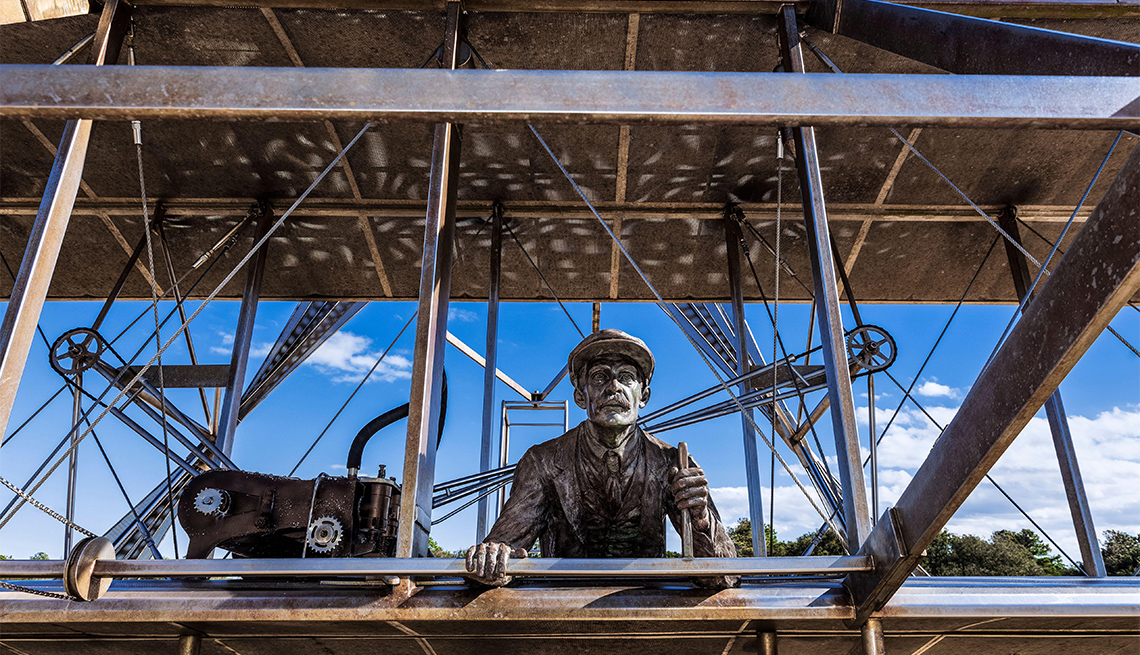AARP Hearing Center
Nestled in the golden dunes of North Carolina’s Outer Banks — a string of barrier islands and spits fronting the Atlantic Ocean and dotted with small coastal towns — the Wright Brothers National Memorial beckons the curious. It’s home to a visitor center and museum, run by the National Park Service, that tells the riveting story of the two American aviation pioneers who made history when they soared through the skies in 1903 on their homemade flyer with a 40-foot wingspan. Step inside the single-story, 9,600-square-foot attraction and you might think you’re floating in the sky as well, with an abundance of light shining through arched floor-to-ceiling windows and the glass dome roof.
You’ll also feel like you’ve traveled back in time, into the yesteryear of black-and-white photographs, handwritten diaries and pencil drawings. In the Exhibit Hall, walk through the brothers’ life and work, starting with their early childhood in Dayton, Ohio, where they grew up with a bishop father and a mechanically gifted mother, who helped them fix their toys and sparked their interest in mechanics. As adults, Orville and Wilbur ran a bike shop in Dayton where their flying machine fledged its wings. In the late 1800s, the concept of using one’s body to move a bicycle was an electrifying novelty that inspired the brothers to dream of maneuvering a wind-propelled glider.
As you explore the exhibits, you’ll learn that wind brought them to North Carolina’s shores, where the confluence of two powerful ocean currents — the warm Gulf Stream and the cold Labrador — create fierce air streams. Letters the brothers exchanged with their sister, Katharine, a loyal supporter, reveal how they worked with a local North Carolina family to set up camp among the dunes. For four years of successes and setbacks, they alternated between testing their flier and going home to Dayton to improve it, finally adding a custom-built lightweight gasoline engine.


Several interactive exhibits help you understand the physical forces involved in airplane lift and propulsion. Step up to a panel with three levers to experience the three axes of plane control — roll, pitch and yaw — which affect, respectively, how planes bank side to side, move up and down, and turn left or right. As you experiment with the levers, the small airplane figures they control turn, roll or change their pitch, according to the forces applied.

































































